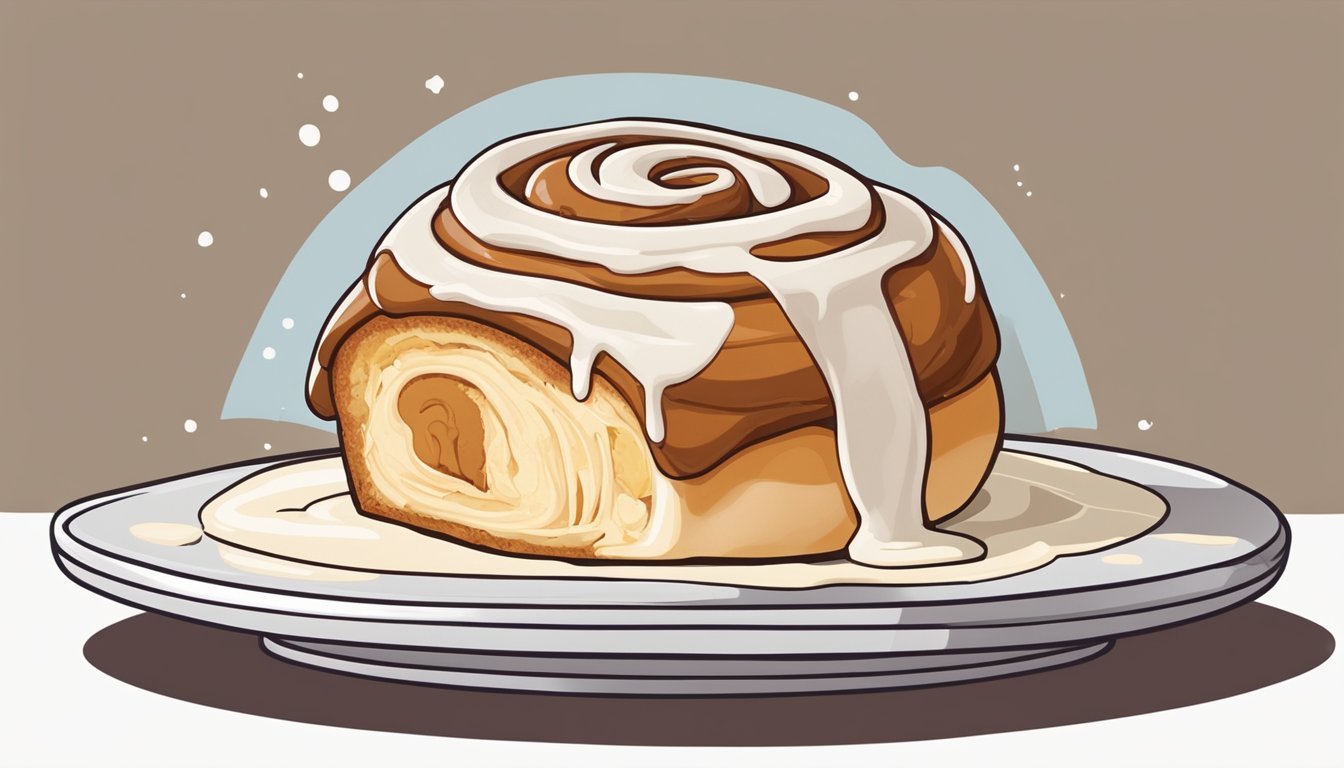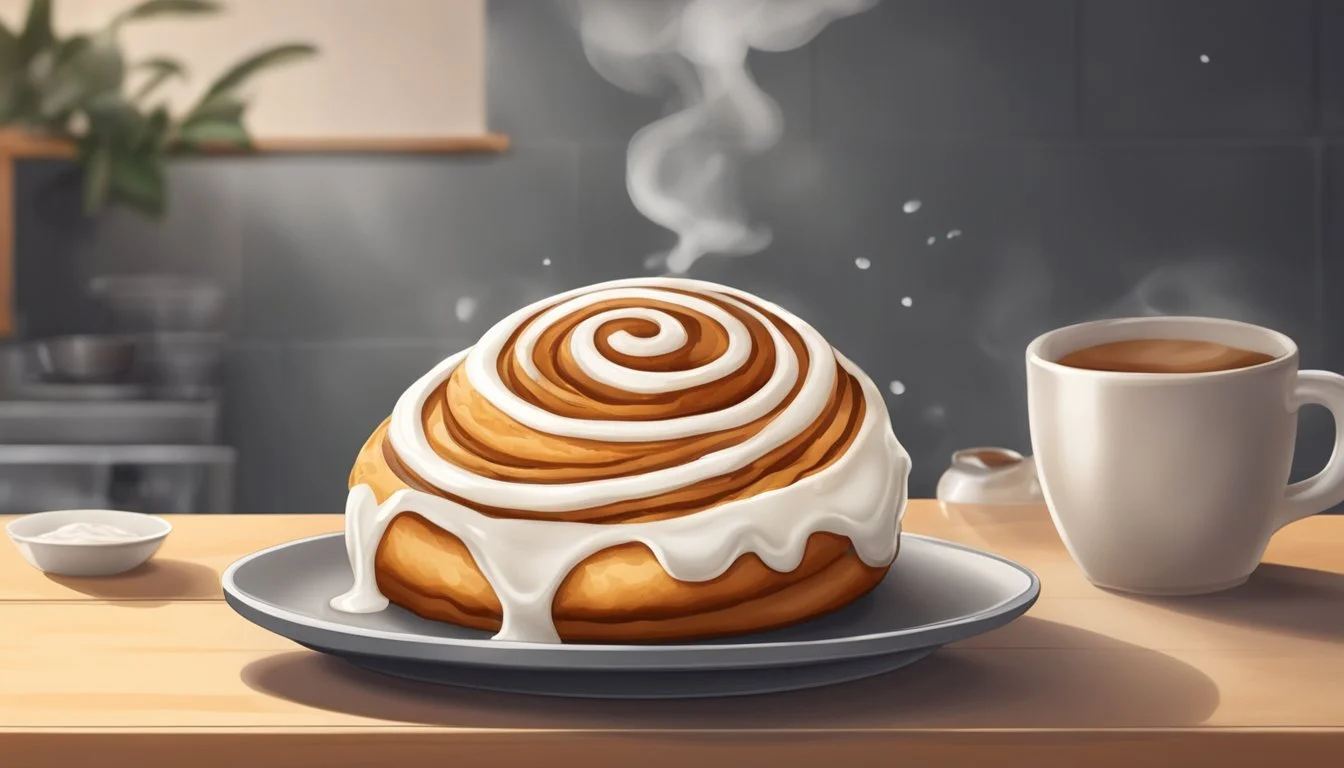Best Way to Reheat a Cinnamon Roll
Keeping the Icing Soft and Gooey
Reheating cinnamon rolls to perfection while preserving the softness of the dough and preventing the icing from hardening is an artful endeavor. The key to achieving this balance lies in applying gentle heat and retaining moisture. By choosing the right method and understanding the nuances of each, one can ensure that the rolls taste as if they've just been baked. Whether using an oven, microwave, air fryer, or skillet, the primary objective is to warm the roll uniformly without compromising the texture or flavor of the icing.
When reheating cinnamon rolls, it's essential to start with preheating the chosen appliance to a moderate temperature. This helps in evenly distributing the heat and warming the cinnamon roll throughout without scorching the outside. Covering the roll with foil or using a damp paper towel can play a significant role in maintaining moisture. This prevents the roll from drying out and keeps the icing soft, just how one would enjoy it fresh from the oven.
The best method for reheating will depend on the resources available and the number of rolls being reheated. An oven is ideal for larger batches, a microwave for speed and convenience, an air fryer for a quick crisp texture, and a skillet for that pan-baked freshness. In every case, patience is a virtue; letting the roll reheat slowly will ensure that the final product is heated thoroughly, with the icing deliciously intact.
Preparation for Reheating
When reheating cinnamon rolls, the goal is to preserve the quality and flavor as if they were freshly baked. Proper storage and thawing techniques are essential steps to achieve this outcome.
Storing Cinnamon Rolls
Storing cinnamon rolls correctly is crucial to maintain their freshness and make reheating more effective. Whether the rolls are homemade or store-bought, they should be kept in an airtight container at room temperature if they will be eaten within a couple of days. If they have frosting, waiting for it to set before covering is advisable to prevent it from sticking or getting ruined. For longer storage, cinnamon rolls can be frozen. To freeze:
Wrap each roll individually with plastic wrap tightly to avoid freezer burn.
Place the wrapped rolls in an airtight container or a heavy-duty freezer bag.
Label the bag or container with the date to track how long they have been stored.
Thawing Frozen Cinnamon Rolls
To thaw frozen cinnamon rolls before reheating, it is best to plan ahead:
Move the rolls from the freezer to the refrigerator the night before you intend to reheat them. This allows for a slow and gentle thawing process.
For a quicker method, rolls can be thawed at room temperature for a few hours, still wrapped to retain moisture.
Do not thaw cinnamon rolls in the microwave as this can affect their texture.
Adhering to these preparation practices will ensure leftover cinnamon rolls retain the quality of freshly baked cinnamon rolls, making the reheating process simpler and the final product enjoyable.
Reheating Methods Overview
When reheating cinnamon rolls, it's crucial to use a method that warms them through without hardening the icing or the roll itself. Each device offers a unique approach to achieve moist, warm cinnamon rolls with soft icing.
Oven Reheating
The oven provides a consistent, even heat that is great for reheating cinnamon rolls. To prevent drying out, they should be covered with foil and reheated at 350°F (180°C) for about 10-15 minutes. A tablespoon of water can be added on top, or a pat of butter, before covering to ensure moisture.
Microwave Reheating
Reheating in a microwave is the fastest method, suitable for individual cinnamon rolls. Place a cinnamon roll on a microwave-safe plate, cover it with a damp paper towel to maintain moisture, and microwave on medium power for 20-30 seconds. Care must be taken to not overheat as the icing can melt and the roll can become tough.
Air Fryer Reheating
An air fryer can reheat cinnamon rolls quickly with a result similar to an oven. Before reheating, add a bit of butter if unfrosted, to prevent drying out. They should be covered with foil and reheated at 350°F (175°C) for 3-5 minutes. This method is ideal when adding a crispy touch to the outer layer of the rolls.
Toaster Oven Reheating
A toaster oven works similarly to a conventional oven but on a smaller scale. Reheat at 350°F (180°C), covering the rolls with foil to retain moisture. Heating for about 10-15 minutes should suffice. This option suits smaller batches or single servings.
Skillet Reheating
For those who prefer a stovetop method, a skillet can be used for reheating cinnamon rolls. A non-stick or heavy-duty skillet should be warmed over medium-low heat. The rolls can be placed in the skillet, covered with a lid to trap steam, and heated for a few minutes until warm. It's imperative to monitor closely to avoid burning the bottom.
Step-by-Step Reheating Instructions
The objective is to reheat cinnamon rolls so they remain soft and fluffy, preserving the moisture and preventing the icing from hardening. Ensuring that the rolls are heated uniformly is vital for the best results.
Oven Technique
To reheat cinnamon rolls in the oven, one should:
Preheat the oven to 350°F (175°C).
Take a baking tray and arrange the cinnamon rolls on it.
Cover the tray with aluminum foil to retain moisture.
Heat for about 10-15 minutes, checking occasionally.
Using the oven allows for an even distribution of heat, which is crucial for maintaining the soft and moist texture of the cinnamon rolls.
Microwave Technique
For a faster option, use the microwave to reheat cinnamon rolls:
Place the cinnamon roll on a microwave-safe plate.
Cover it with a damp paper towel, or place a cup of water inside the microwave alongside to add moisture.
Heat on medium power for 30 seconds, then check if additional time is needed.
Microwave reheating is quick and can maintain the rolls' moisture if done correctly, preventing the rolls from drying out.
Air Fryer Technique
To reheat cinnamon rolls using an air fryer:
Preheat the air fryer to 350°F (175°C).
If the rolls are unfrosted, a small pat of butter can be added on top for extra moisture.
Place the rolls in the air fryer basket and cover them with foil.
Reheat for 3-5 minutes.
The air fryer offers a crisp exterior while keeping the inside soft, provided it's not overheated and watched closely.
Skillet Technique
Alternatively, a frying pan or skillet can be used:
Preheat the skillet over medium-low heat.
Place the cinnamon roll in the skillet and add a lid to trap steam and keep the roll moist.
Heat for 1-2 minutes, then carefully flip to ensure even warming for another 1-2 minutes.
This method can give the rolls a slightly crispy bottom while the steam under the lid keeps the middle and icing soft.
Additional Tips and Tricks
Reheating cinnamon rolls can be delicate, especially when trying to preserve the icing's softness without compromising the dough's texture. These pointers will ensure a treat that's as delightful as when it was first baked.
Avoiding Common Reheating Mistakes
When reheating cinnamon rolls, one should avoid setting the temperature too high as this can lead to burning the dough or hardening the icing. Opt for a moderate temperature and cover the rolls with foil to promote even heating. For those with an air fryer, reheating at 350°F for a shorter period is usually sufficient to revive the rolls without causing them to become tough.
Temperature: Keep it at 350°F (175°C), whether using an oven or air fryer.
Covering: Always cover with foil to retain moisture and prevent direct heat on the icing.
Making the Most of Leftovers
To make Pillsbury, Cinnabon, or homemade cinnamon rolls soft and fluffy again, adding a dash of water before heating can help. For a creative twist, leftover cinnamon rolls can be repurposed into French toast, waffles, or pancakes by dicing them and incorporating them into the batter for a pleasant cinnamon-infused breakfast.
Hydration: A small amount of water or butter can return moisture to the dough.
Repurposing: Use diced leftover rolls in French toast, waffles, or pancakes batter for an extra cinnamon flavor.
Incorporating these techniques when reheating cinnamon rolls will result in a desirable soft, warm, and fluffy dessert, reminiscent of its original state.
Special Considerations for Icing
When reheating cinnamon rolls, the key to preserving the integrity of the icing is gentle heating and shielding the topping from direct heat.
Reheating Frosted vs. Unfrosted Rolls
Frosted Rolls: When a cinnamon roll has already been iced, special care is needed to prevent the frosting from melting and running off. For rolls with a cream cheese (how long does cream cheese last?) frosting, low temperature and foil coverage during oven reheating can help maintain texture.
Oven Method: Preheat to 300°F (150°C). Place frosted rolls on a baking sheet. Cover snugly with aluminum foil to keep in moisture and heat evenly. Heat for 10-15 minutes.
Unfrosted Rolls: These can handle higher temperatures as there is no icing to protect. Once heated, apply the frosting after the rolls have slightly cooled.
Preserving the Quality of Icing
The goal is to reheat cinnamon rolls without hardening the icing or causing it to become too runny.
Avoid High Heat: Don't exceed 300°F (150°C) as high heat can cause the icing, particularly cream cheese-based ones, to separate and liquefy.
Moisture is Key: A touch of water added to the oven when reheating can provide humidity that helps keep the icing soft. A small, oven-safe dish of water placed on a lower rack can assist in this.
Timing Matters: Check rolls periodically to ensure they're warmed through but not overheating, which could affect icing quality.
Alternative Uses for Cinnamon Rolls
Cinnamon rolls, with their sweet, spicy filling and soft, doughy texture, are a versatile treat that can be repurposed in a variety of delectable ways. Leftover cinnamon rolls do not need to go to waste; they can be creatively transformed into new and tantalizing dishes.
French Toast: Dip slices of day-old cinnamon rolls in a mixture of egg, milk, vanilla, and a pinch of cinnamon. Fry on a skillet until golden brown for a decadent twist on classic French toast.
Waffles: Cinnamon roll dough, particularly convenient pre-made dough like Pillsbury, can be placed in a waffle iron for a quick and unique breakfast option. Serve with syrup or icing on top.
Pancakes: Blend cinnamon roll chunks into pancake batter to create fluffy pancakes with a swirl of cinnamon flavor. Perfect for an indulgent breakfast treat.
One may also freeze cinnamon rolls effectively to extend their shelf life and have them ready for future use. Freezing works well with both homemade and store-bought rolls, ensuring they retain moisture and flavor.
Cinnamon Roll Recipe Remix: Chopped rolls can also be added to various baked goods, such as cookies or bread puddings, adding a fascinating texture and flavor profile.
It's evident that the humble cinnamon roll is more than just a one-time delight. With imagination, one can bring this beloved standby to new culinary heights, making it a versatile component in a diverse array of sweet treats.
Final Thoughts
Reheating cinnamon rolls while preserving the delicate texture of the dough and preventing the icing from hardening is a straightforward process if one follows a few key steps. They can utilize the oven or a pan on the stovetop to achieve optimal results.
In the Oven:
Preheat the oven to 350°F (175°C).
Cover the cinnamon rolls with aluminum foil to retain moisture.
Place on a baking tray and heat for 10-15 minutes.
On the Stove:
Warm a pan with a tablespoon of water to create steam.
Wrap the rolls in foil and place in the pan on medium-low heat.
Note:
A small amount of water or pat of butter can be added to rolls before reheating to prevent drying.
The foil acts as a barrier and keeps the icing from hardening by trapping moisture.
By adhering to these methods, one ensures their cinnamon rolls emerge from the heat as delectable as they were when first baked. Whether for a quick breakfast or a delightful snack, properly reheated cinnamon rolls can provide warmth and comfort, paired with the irresistible aroma of cinnamon and sugar.






